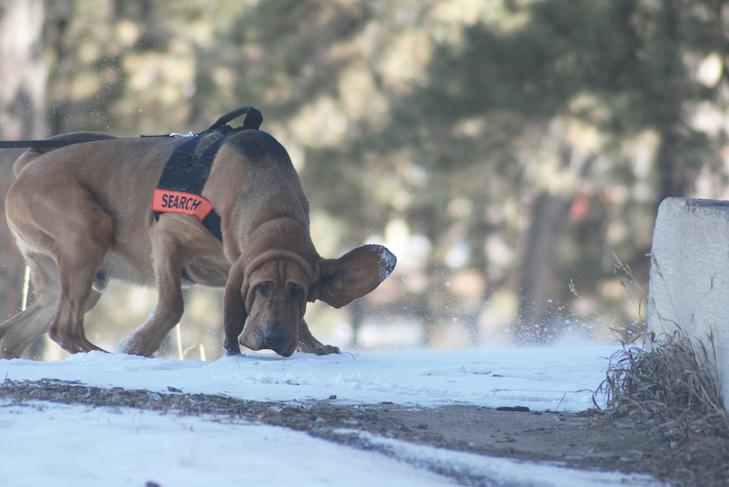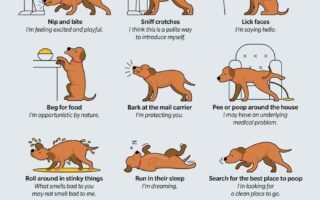In the shadowy realms of search and rescue operations, where every second counts and hope flickers like a dimming light, a unique breed of hero emerges: the cadaver dog. These canine companions, with their extraordinary sense of smell and unwavering dedication, play an invaluable role in uncovering the lost and providing closure to grieving families. However, behind their remarkable abilities lies a rigorous journey of training, one that transforms playful pups into adept detectives capable of navigating the most challenging environments. In this article, we will explore the intricacies of cadaver dog training, shedding light on the techniques, methodologies, and ethical considerations that shape these incredible partnerships between humans and dogs. Join us as we delve into a world where scent leads to solace and skill translates into service.
Table of Contents
- Foundations of Cadaver Dog Training Techniques
- Essential Skills for Handlers and Dogs in Search Operations
- Integrating Scents and Environments for Effective Training
- Maintaining Peak Performance: Health and Wellness for Working Dogs
- Q&A
- Final Thoughts
Foundations of Cadaver Dog Training Techniques
Training a cadaver dog involves a range of specialized techniques that are essential for developing the animal’s ability to locate human remains efficiently. This process typically combines scent discrimination training with practical experience in real-world scenarios. Key methods include:
- Odor Recognition: Dogs are introduced to the specific scents of decomposing organic material to create a mental database.
- Positive Reinforcement: Employing rewards such as treats or toys encourages dogs to engage and persist in their search efforts.
- Controlled Distractions: Training often takes place in varied environments where distractions are present, teaching dogs to focus despite external stimuli.
Furthermore, an understanding of canine behavior and instincts allows trainers to tailor their approaches effectively. This not only involves mastering obedience signals and commands but also leveraging the bond between handler and dog. Some foundational components to consider include:
| Component | Description |
|---|---|
| Teamwork | Strong handler-dog communication is vital for successful searches. |
| Continuous Assessment | Regular evaluations of the dog’s performance help identify areas for improvement. |
| Real-Life Practice | Simulated search scenarios enhance a cadaver dog’s effectiveness in actual situations. |
Essential Skills for Handlers and Dogs in Search Operations
Successful search operations rely heavily on the harmonious partnership between the handler and the dog. Handlers must cultivate a range of essential skills that not only enhance their ability to control and direct their canine counterparts but also ensure the safety and effectiveness of the search mission. Key skills include:
- Communication: Clear verbal and non-verbal signals establish a strong bond and understanding.
- Problem-Solving: The ability to adapt to unexpected challenges or terrain creates a more efficient search process.
- Physical Fitness: Maintaining peak physical condition is crucial for enduring demanding search scenarios.
On the other hand, dogs involved in search operations must be trained to hone their innate abilities while developing complementary skills. A well-trained search dog exhibits qualities such as:
| Skill | Description |
|---|---|
| Scent Discrimination | Ability to differentiate between various scents, crucial for cadaver detection. |
| Focus | Maintaining concentration amidst distractions allows for effective searches. |
| Endurance | Long-lasting stamina ensures the dog can work efficiently over extended periods. |
Integrating Scents and Environments for Effective Training
Training cadaver dogs to proficiently locate human remains requires more than mere repetition; it necessitates a harmony of aromas and environments to stimulate their senses. By integrating unique scents into various training settings, trainers can replicate the unpredictability of real-life situations. Utilizing a mix of natural and artificial scents can foster adaptability in dogs, ensuring they can discern critical cues in the field. Consider incorporating scents that are familiar yet varied, such as:
- Decay Enhancers - Examples include aged meat or spoiled fruits.
- Environmental Mimics – Use foliage, soil, or crushed leaves to simulate outdoor elements.
- Scent Trails - Create trails leading to specific locations, testing the dog’s tracking ability.
Furthermore, the surrounding environment plays a crucial role in a dog’s ability to focus and respond effectively. By training in multiple settings—ranging from densely forested areas to urban landscapes—trainers can expose dogs to diverse distractions. The ambiance of each environment influences how dogs interpret scents, making it vital to analyze factors such as:
| Environment Type | Key Features | Training Benefits |
|---|---|---|
| Urban Areas | Noise, people, various man-made scents | Enhances focus amidst distractions |
| Woodlands | Diverse flora and fauna, varied ground cover | Improves tracking over natural terrains |
| Open Fields | Wide-open spaces, fewer distractions | Builds confidence in handling long-distance searches |
Maintaining Peak Performance: Health and Wellness for Working Dogs
To ensure optimum performance in cadaver dogs, it is crucial to focus on both physical and mental well-being. Regular exercise not only boosts their stamina but also sharpens their olfactory skills. Engaging in varied activities, such as agility training and scent work, keeps their minds stimulated and reduces the risk of burnout. Additionally, creating a consistent routine can enhance their focus during training, making them more effective in real-world scenarios. Remember to prioritize the following:
- Balanced Diet: Nutrition plays a key role in the overall health of your working dog. A diet rich in protein and healthy fats will fuel their activities.
- Hydration: Always ensure your dog has access to clean, fresh water, especially during training sessions.
- Regular Veterinary Check-ups: Routine check-ups can prevent potential health issues, ensuring your dog remains in peak condition.
Equally important is fostering a strong bond between the handler and the cadaver dog, which significantly impacts their effectiveness in search and rescue operations. Positive reinforcement techniques can enhance training sessions, creating a more enjoyable experience for both parties. Additionally, incorporating mental challenges into their training can keep them engaged and sharp. Establishing a performance tracking system allows for the evaluation of progress and identification of areas needing improvement. Consider utilizing a table to monitor key health metrics:
| Metric | Ideal Range | Notes |
|---|---|---|
| Weight | 10-15% over breed standard | Monitor regularly to prevent obesity. |
| Heart Rate | 60-120 beats/min | Varies with activity level. |
| Body Temperature | 101-102.5°F | Check after strenuous activity. |
Q&A
Q&A on Cadaver Dog Training: Unveiling the Canine Detectives
Q1: What exactly is a cadaver dog?
A1: Cadaver dogs, also known as human remains detection dogs, are specially trained canines that assist law enforcement, search and rescue teams, and forensic experts in locating deceased individuals. Their keen sense of smell makes them invaluable in unraveling mysteries surrounding missing persons or crime scenes.
Q2: How does the training process for cadaver dogs begin?
A2: The training journey typically starts with basic obedience, establishing a strong foundation of commands and behaviors. Once the dog is adept at following commands, the handler introduces scent recognition exercises using curated materials that represent human remains. This process gradually progresses to real-life scenarios, enhancing the dog’s ability to identify specific scents associated with cadaveria.
Q3: What types of scents do cadaver dogs get trained to detect?
A3: Cadaver dogs are primarily trained to detect scents related to decomposing human remains. This includes a range of odors, from soft tissue to skeletal remains. The training often involves exposing the dogs to various samples, including soil or clothing that may have come into contact with a body, to help them discriminate between different stages of decomposition.
Q4: Are there specific breeds that are better suited for cadaver dog training?
A4: While several breeds can excel as cadaver dogs, certain breeds are particularly well-suited due to their strong sense of smell, drive, and temperament. Breeds like German Shepherds, Bloodhounds, Golden Retrievers, and Belgian Malinois are commonly selected for training. However, individual personality and eagerness to work are often more crucial than breed alone.
Q5: What role does the handler play in a cadaver dog team?
A5: The handler is a vital part of the cadaver dog team, acting as the bridge between the dog and the task at hand. A successful partnership relies on trust, communication, and understanding. The handler interprets the dog’s behaviors and signals, guiding them effectively during searches. Their bond helps enhance the efficiency and accuracy of the detection process.
Q6: How long does it typically take to train a cadaver dog?
A6: The training duration can vary widely, typically spanning six months to a couple of years, depending on the dog’s age, readiness, and specific training objectives. Ongoing training and practice are essential to maintain the dog’s skills and ensure they remain sharp in the face of real-life challenges in the field.
Q7: Are cadaver dogs used only in criminal investigations?
A7: While cadaver dogs are commonly employed in criminal investigations, their talents extend far beyond the courtroom. They play crucial roles in natural disasters, such as earthquakes or floods, helping locate victims; in locating historical remains; and even in assisting with searches for missing persons in wilderness settings. Their capabilities make them versatile partners in various scenarios.
Q8: How successful are cadaver dogs in locating remains?
A8: Cadaver dogs have a remarkable success rate, thanks to their acute olfactory senses. However, success can depend on various factors, including the environment, the state of decomposition, and how long the remains have been buried or submerged. With proper training and conditions, these canine detectives often provide pivotal leads in complex cases.
Q9: Is the training for cadaver detection different from that of search-and-rescue dogs?
A9: Yes, while both cadaver detection and search-and-rescue dogs rely on scent detection, their training focuses on different objectives. Search-and-rescue dogs are trained to locate living individuals and may use positive reinforcement techniques to encourage playfulness. In contrast, cadaver dogs are specifically conditioned to identify the unique scents associated with death. Nonetheless, many principles of obedience and scent work overlap in the training process.
Q10: What should one consider if interested in pursuing cadaver dog training?
A10: Aspiring handlers should consider a passion for working with dogs and a solid understanding of canine behavior. A commitment to extensive training, both for the dog and the handler, is essential. Additionally, gaining experience through volunteer work or apprenticeships with local search and rescue organizations can provide invaluable insights into the world of cadaver detection. With dedication and persistence, one can be part of this impactful and rewarding field.
Final Thoughts
As we conclude our exploration into the specialized world of cadaver dog training, it becomes clear that the bond between handler and canine transcends mere utility; it is a partnership rooted in trust, instinct, and a shared mission. These remarkable dogs, trained to detect the faintest traces of human remains, provide invaluable assistance in difficult and often heartbreaking scenarios. Their abilities not only help bring closure to families in mourning but also serve as a reminder of the interwoven fates of humans and their four-legged counterparts.
The techniques employed in cadaver dog training are a blend of science, art, and compassion, reflecting a profound understanding of canine capabilities. As we advance our methods, it is crucial to continue prioritizing the welfare of these extraordinary animals, ensuring they remain healthy, motivated, and mentally stimulated throughout their training journeys.
In a world where each lost life carries a unique story, the work of cadaver dogs and their handlers holds profound significance. Their tireless dedication underscores the importance of remembering those who have passed while striving to provide solace for those left behind. As we look to the future, may we embrace the ongoing development of this vital field, honoring the legacy of those lost and the remarkable dogs who help us find them.



